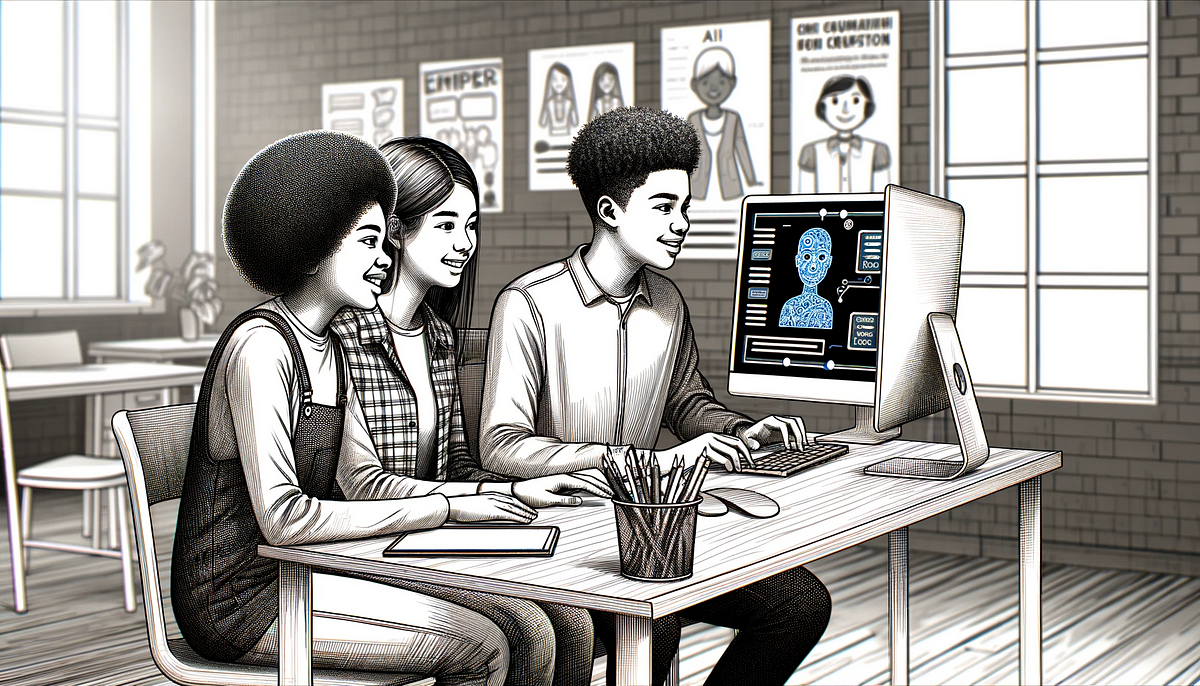At Viden.AI, we have often discussed artificial intelligence from an educator's perspective. Still, in this article, I focus on how high school students can use ChatGPT to promote their learning and creativity in school without it being considered cheating.
Below, I have collected some examples of where students can benefit from using the language models, but also concerning best practices and pitfalls. The examples I highlight will be the same as asking your parents or talking to your classmates - now we have a language model that can be a knowledgeable helper.
The article can be used to demystify some of the prejudices about the language models and as a starting point for a dialogue in the class about their use. Therefore, the rest of the article is also addressed to the students who may never have used a language model or those who are nervous about how much they may use the technology. However, it is essential to state that students must understand the technology and its challenges before using it.
How you can use ChatGPT in high school
Learning something requires work, but ChatGPT can be a good tool (among many others) in your daily life at high school. But before we begin, it is crucial to understand that ChatGPT is not a miracle machine that can do it all. You must still have professional insight and foundation before using the technology; otherwise, you will not have the opportunity to be critical of the information that comes from ChatGPT.
There is a marked difference between searching for information on Google and asking ChatGPT. When you use Google, you are the one who chooses the sources and assesses the content's validity. ChatGPT, on the other hand, basically generates independent content based on its training and does NOT act as a search engine, which means that although ChatGPT can find answers on the web, these are still based on training and probability and not necessarily more accurate than answers that you google yourself. This difference is essential to understand when navigating between these two information sources.
At the same time, you must be aware that the rules on the exam may mean that you cannot use the advice below and that you must always follow your school's instructions.
To understand academic content
ChatGPT can help understand and explain concepts, models, or theories. Below are some questions you can work on:
- If you encounter challenges in understanding a novel you are working with in class, artificial intelligence can help make the content more accessible, for example, by explaining its content.
- If models are challenging to understand, you can get help by asking questions such as: 'How can I use the model?' and 'What does it mean if I apply the model to this content?'
- There may also be complex concepts; you can ask about them here.
- You can also insert your text where you explain a concept and then ask questions to confirm whether it is correctly understood.
Best practices:
When you use ChatGPT to ask questions about the content, you should do it like in class. Here, knowing when artificial intelligence supplements your learning and when it steps in and replaces it is essential. Therefore, you should understand the underlying concepts before using ChatGPT to get quick answers, as you need to be able to judge for yourself whether the answer is correct.
Pitfalls:
ChatGPT and similar tools are good for helping to understand complex topics, but the risk is that you become too dependent on the technology. You can't be sure that everything ChatGPT comes up with is real, so you must research the content more traditionally. Be sure to be ultra-critical of sources!
To research a topic
ChatGPT can be a good starting point for understanding an area when you have to investigate an academic topic in teaching.
- If you are working on a project, artificial intelligence can be suitable for creating an overview of the subject. Maybe there are areas you haven't thought about yourself.
- To help you get started with an essay, you can also use ChatGPT for idea development.
- Use ChatGPT to suggest exciting topics to write about in SRP, SOP, etc.
Best practices:
You can save time by having ChatGPT develop a more fundamental understanding of the topic you are working on. However, it would be best if you still researched the topic further, and here, you need to use other sources.
Pitfalls:
Be aware that ChatGPT can often make mistakes and use subject terms you may not know about or have not encountered in class. Therefore, it is essential to be critical and double-check the information to know that the terms are used correctly and you understand their meaning.
To help with writing
If you can't get started on a task or don't understand how to solve it, artificial intelligence can help overcome writer's block.
- Try entering the task statement into ChatGPT and ask it to explain.
- Here, you can ask questions like 'Did I understand correctly that...' or 'Does it make sense that I am writing about...'.
- If you have already written a text, you can also use ChatGPT to investigate whether your assignment could include or elaborate on other relevant areas or perspectives.
If you have written a text, you can also investigate whether other areas are relevant to include in the assignment. Are there any perspectives that you have forgotten, or is there anything that could be elaborated on?
Best practices:
ChatGPT is excellent for helping you move forward with your work and thus overcome writing blocks. Here, it will also be good to refer to ChatGPT when it has been used in the work and how the technology has been used.
Pitfalls:
It is essential to be careful not to become too dependent on the technology so that ChatGPT does not take over your writing process. Remember that the key is your processing and analysis of the subject, not just what a language model can generate. You may never submit material created by ChatGPT as your own without adequately crediting it.
Summary
The language models are a fantastic technology that can help you in your everyday life, and you shouldn't be afraid to use them - as long as you use them correctly. Here, you must be critical of the information that, e.g., ChatGPT provides and ensure that the understanding and processing of a topic is independent and vital. This also includes appropriately citing sources and not presenting generated content as your own.
Sources:
Jaya Ramchandani's article on Medium inspired the above article. Read it here:








